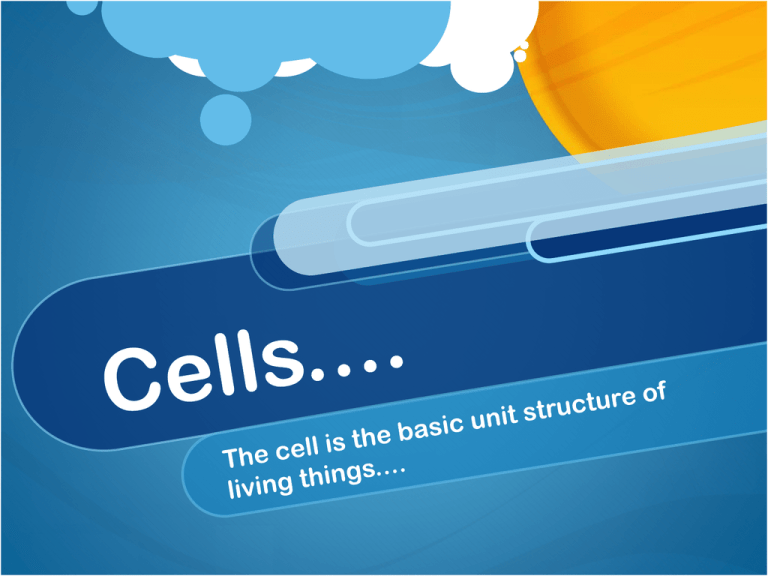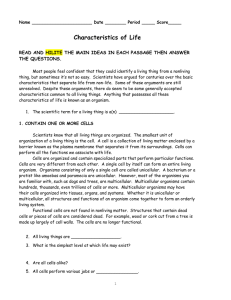Cells.
advertisement

Living things are different than nonliving things... You are surrounded by life, but how would you define a living thing? Does it use energy? Does it move? Does it consume food and water? Organisms: any individual form of life that uses energy to carry out its activities. Characteristics of a living thing... All living things are: are made up of cells respond to the environment have the ability to reproduce move grow and develop perform metabolic processes Metabolism: the sum of the physical and chemical processes in an organism Organization... An organisms body must be organized in that enables it to meets its needs Some organisms are simple bacteria archaea some protists Some are more complex when different part of the organism performs different functions dogs, cats, oak trees, humans Needs for life.... Organisms need energy, materials, and living space All energy comes from the sun Some organisms use this energy directly (photosynthesis) Others use this energy by eating food Materials needed Carbon dioxide, oxygen, nitrogen, water All living things are made up of cells... The cell is the smallest unit of living things If an organisms is unicellular, then all functions of life happen within that one cell. If an organisms is multicellular, different cells have different jobs and they all work together. Cell Theory.... With the invention of the microscope and the contributions of many scientists, a very important question was answered in the 1850’s. The question was: Where do cells come from There are three componets of the cell theory... Every living thing is made up of one or more cells Cells carry out the functions needed to support life Cells come only from other living cells











